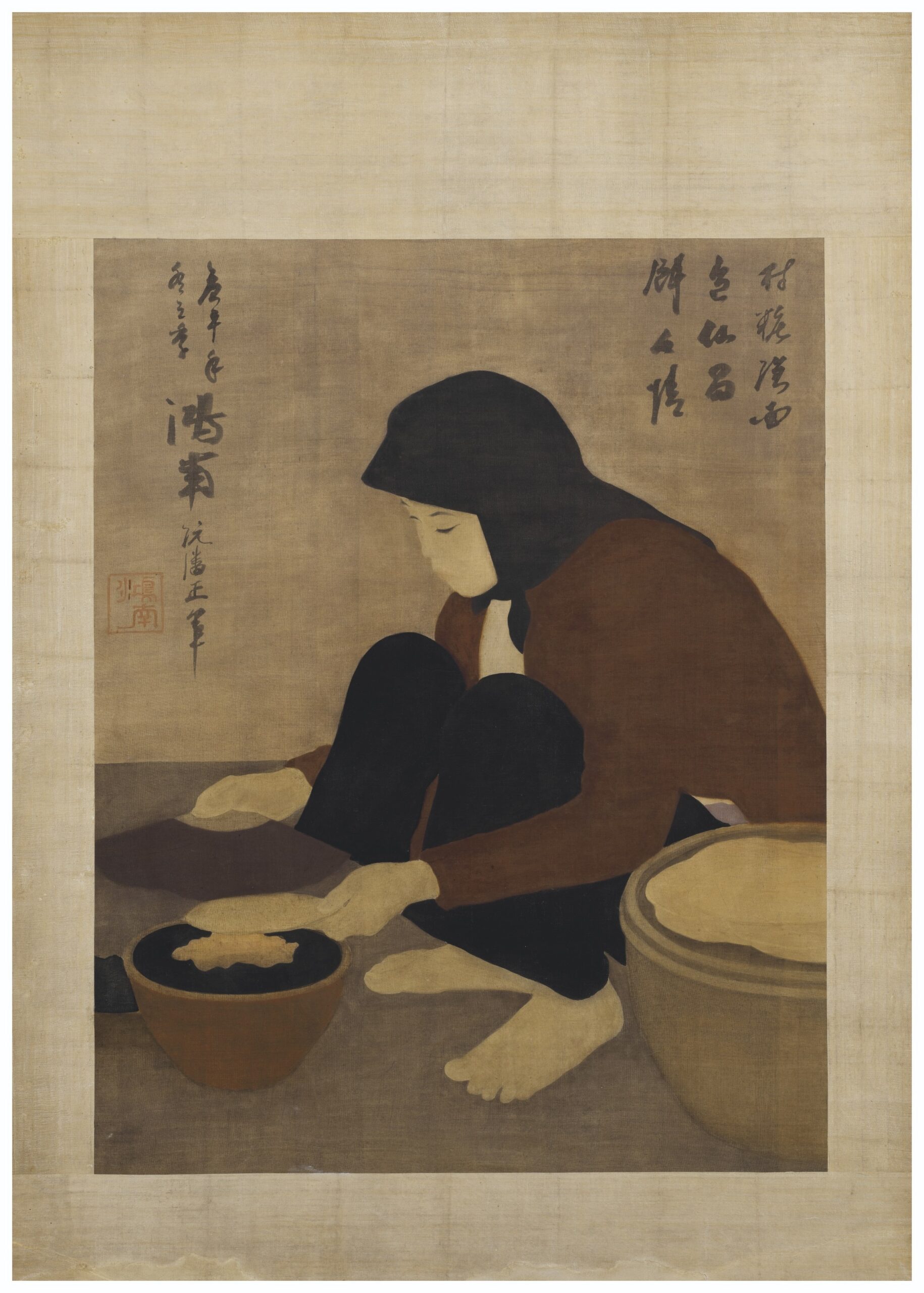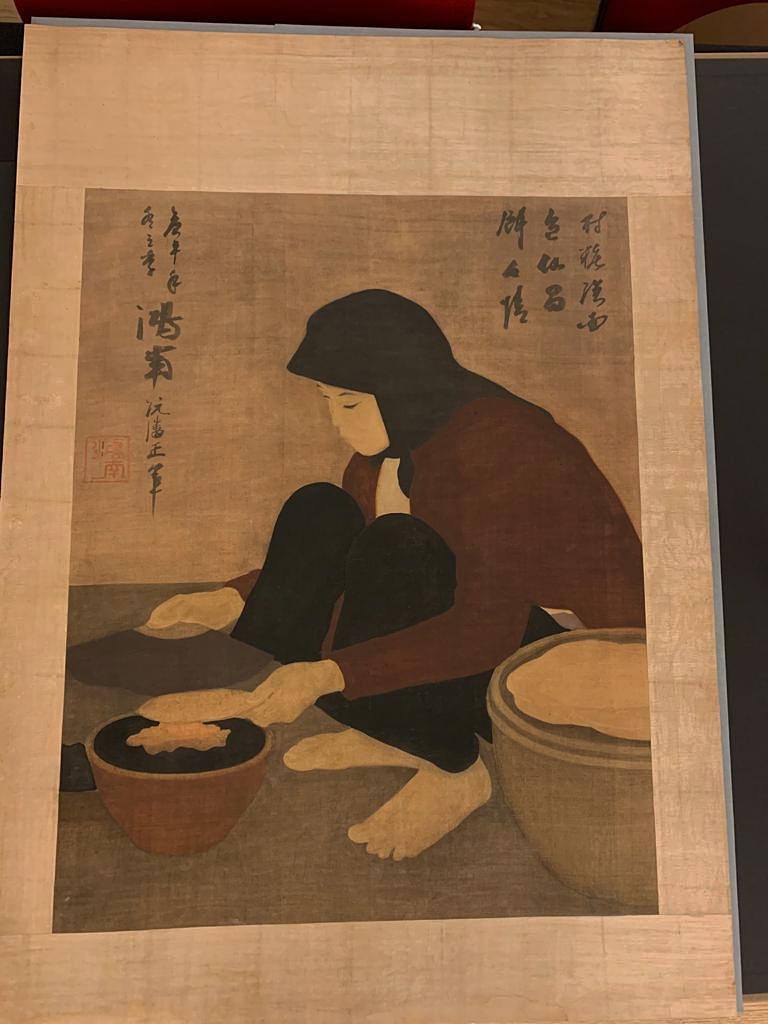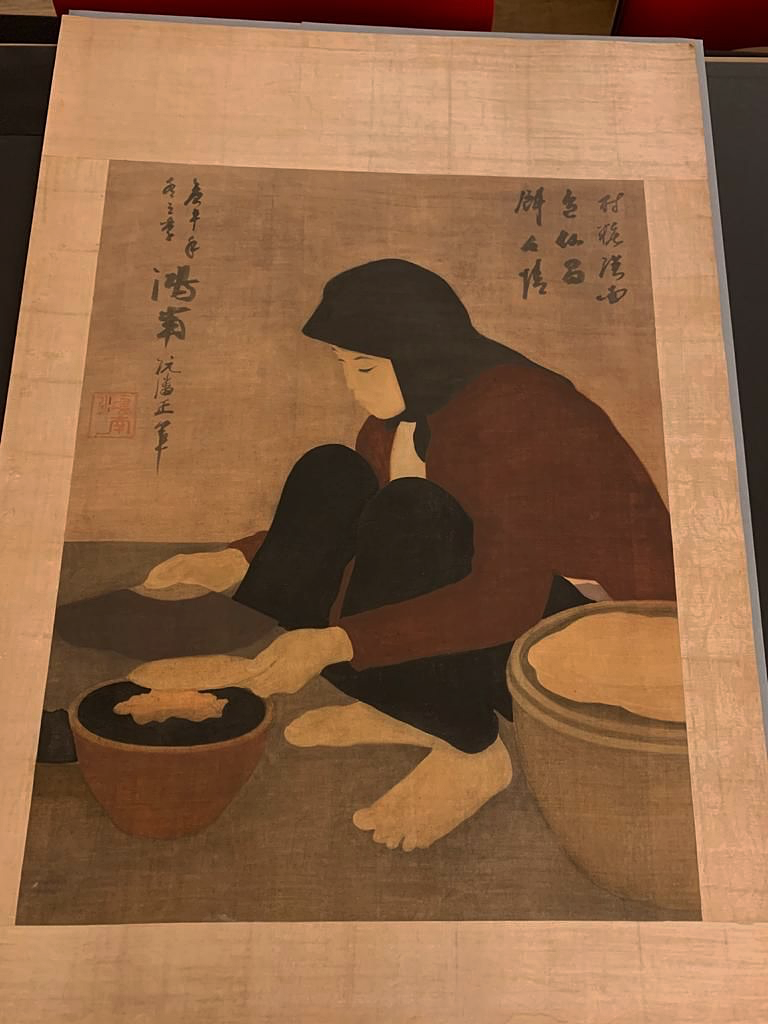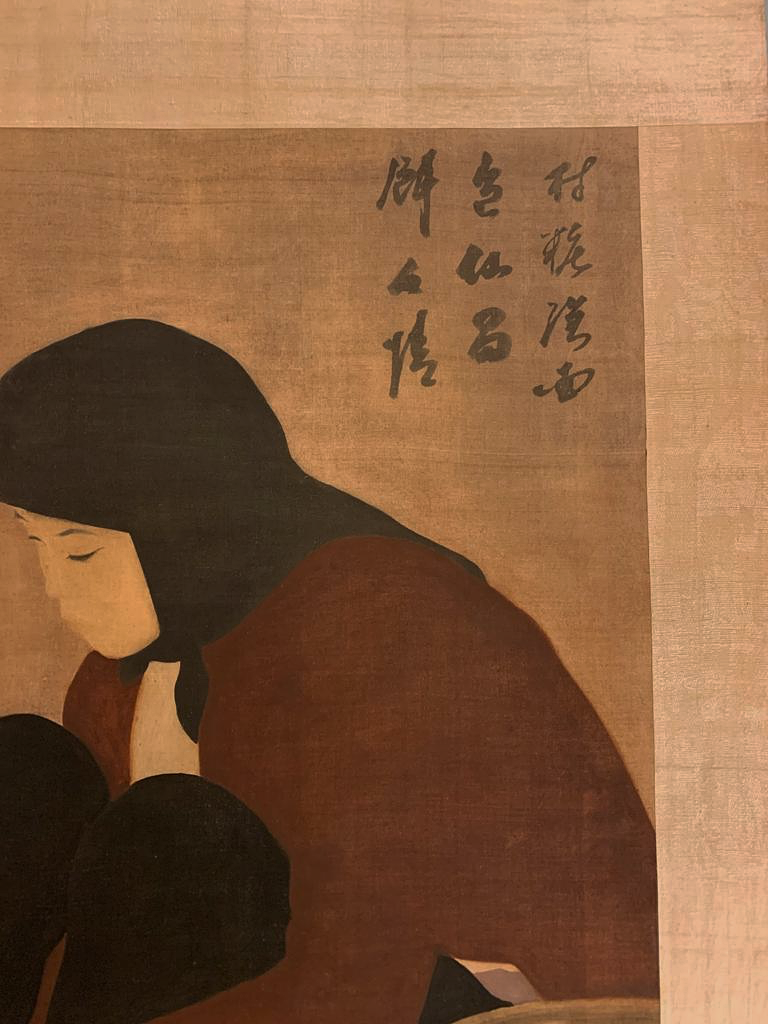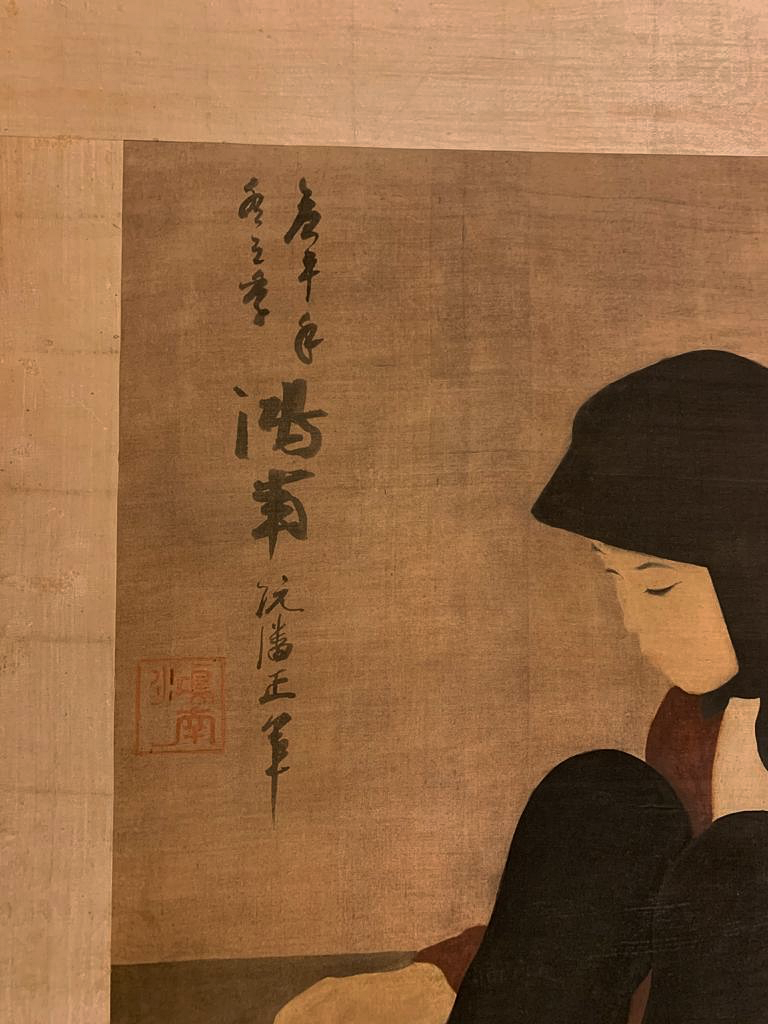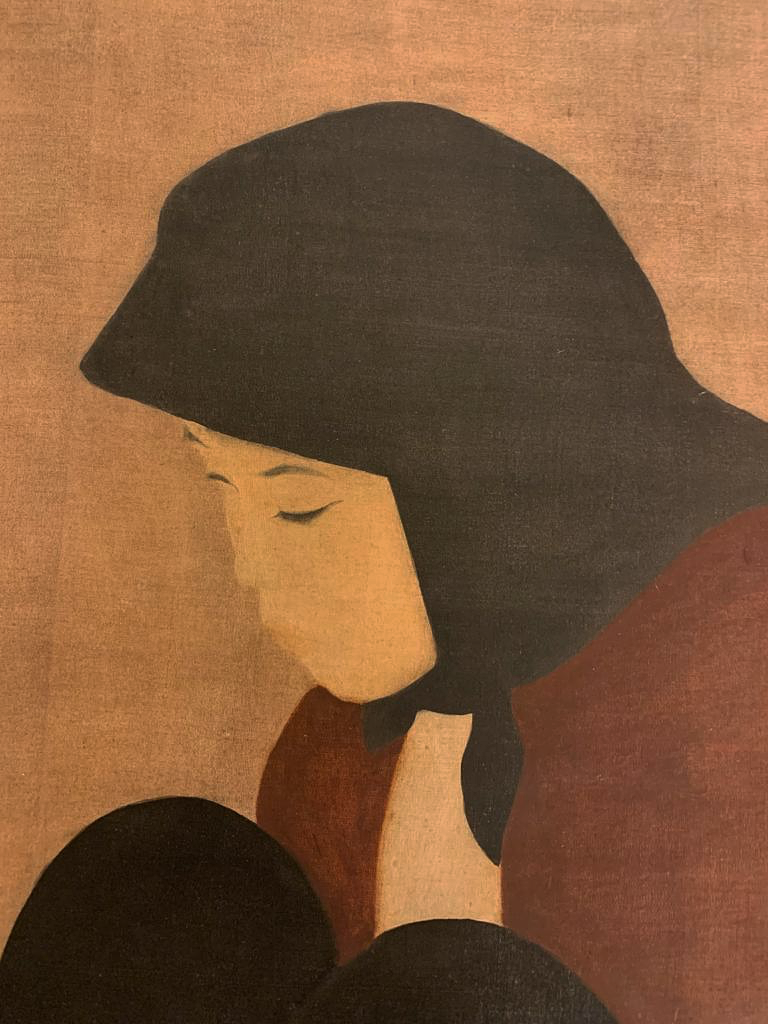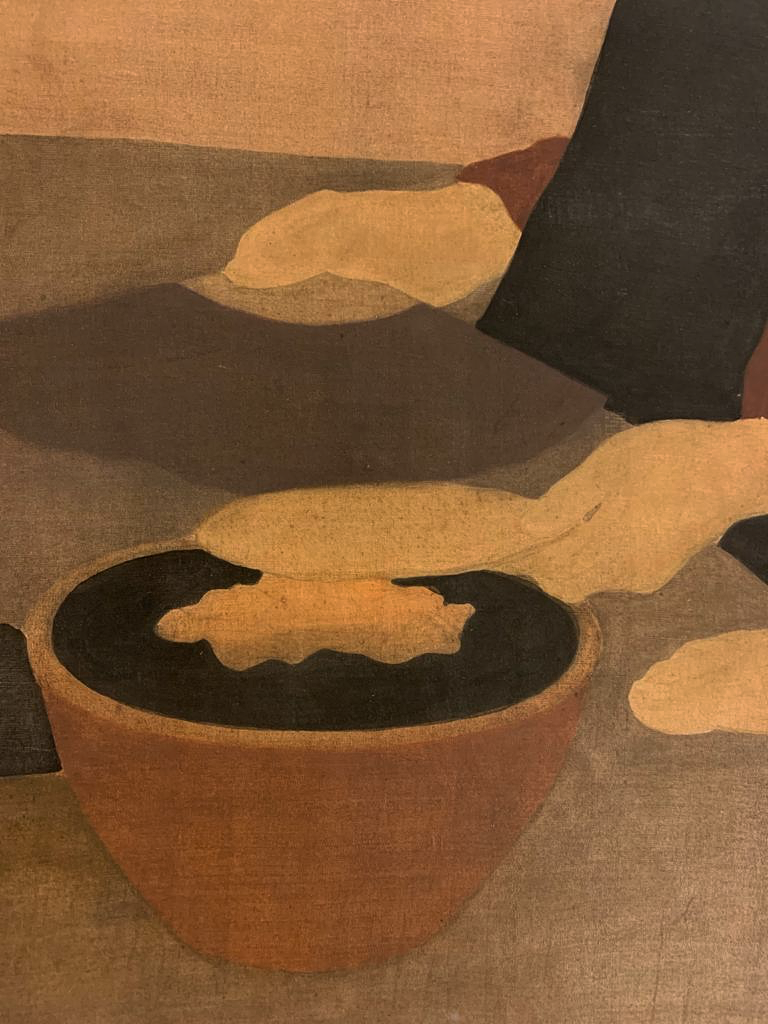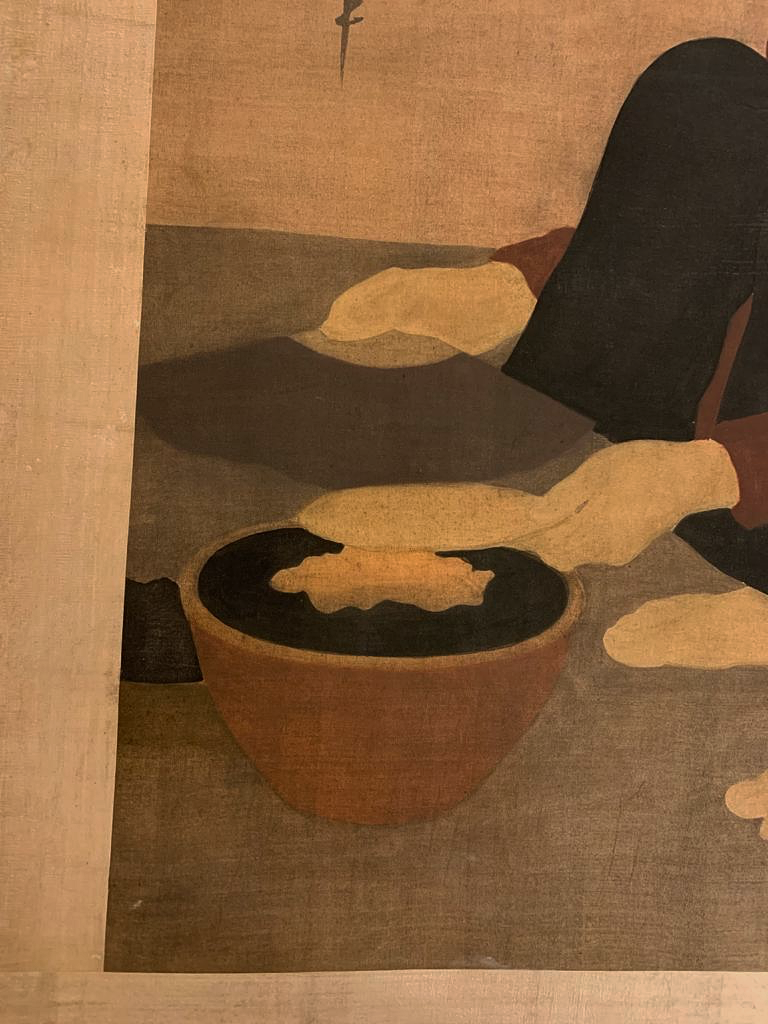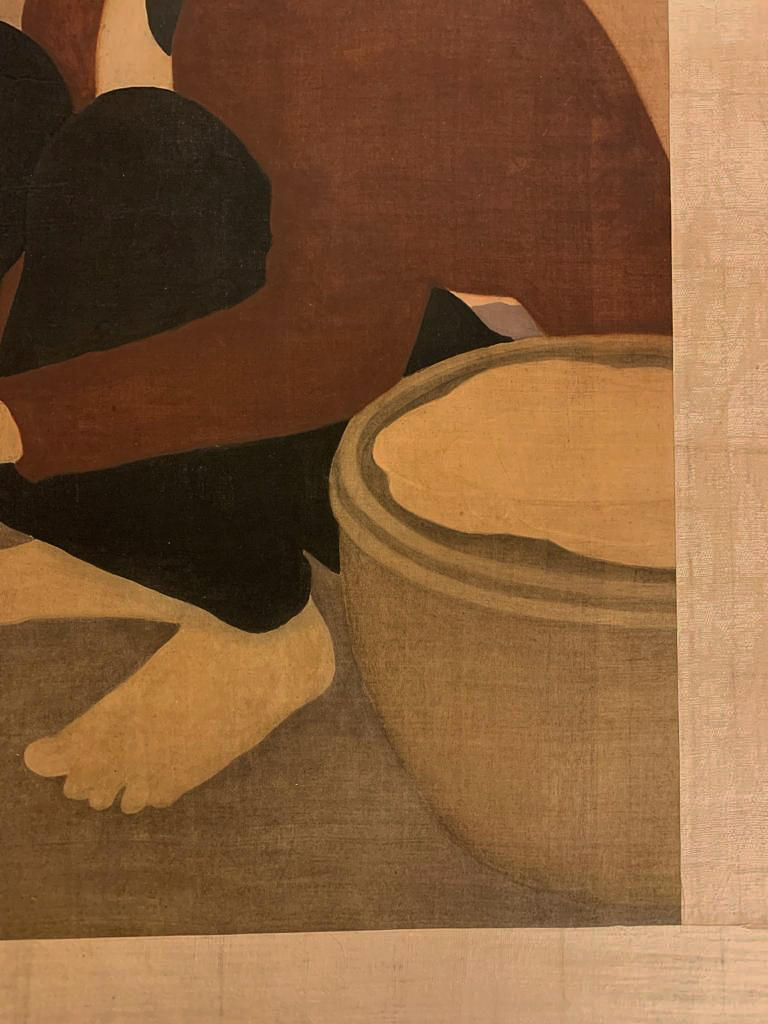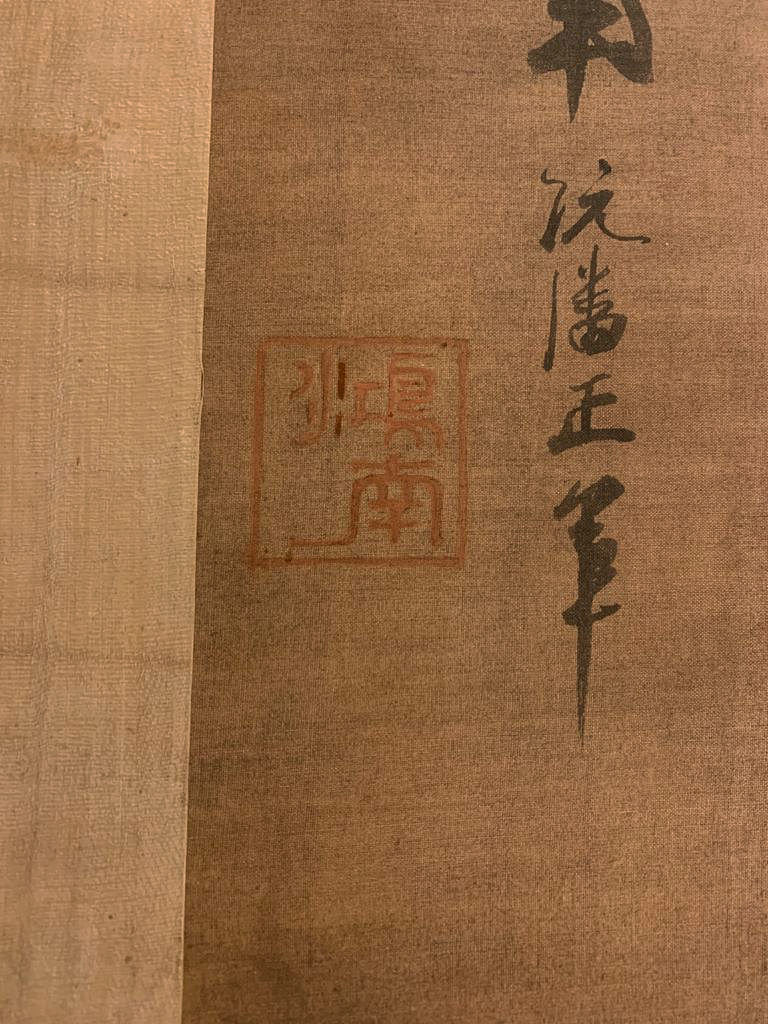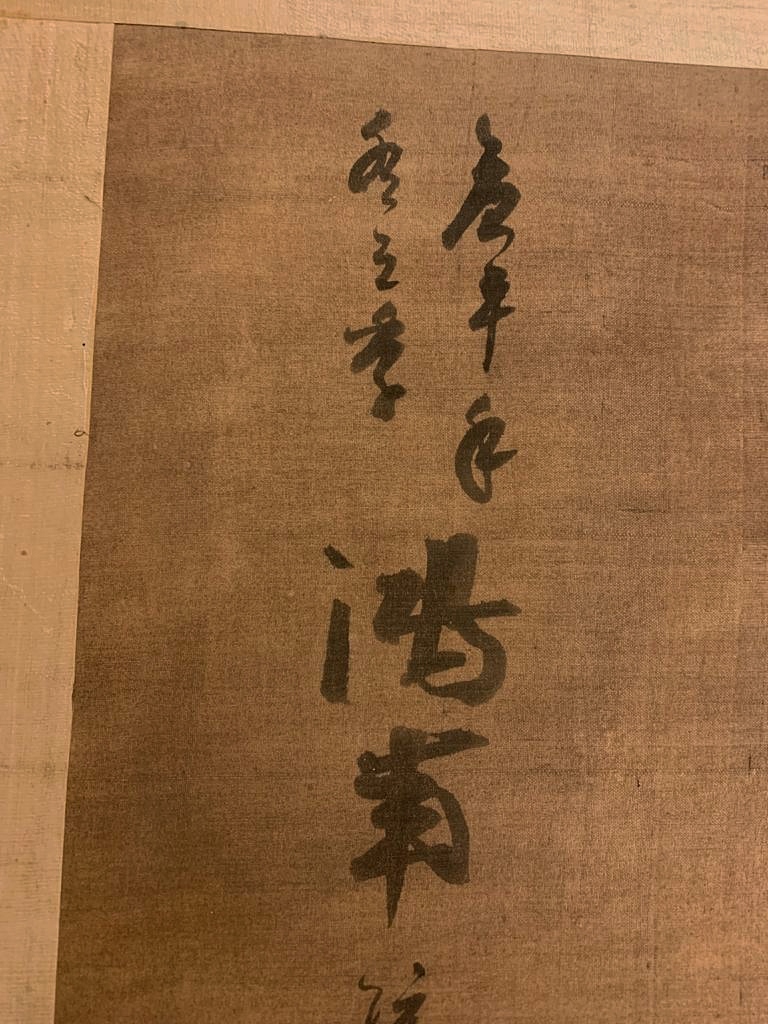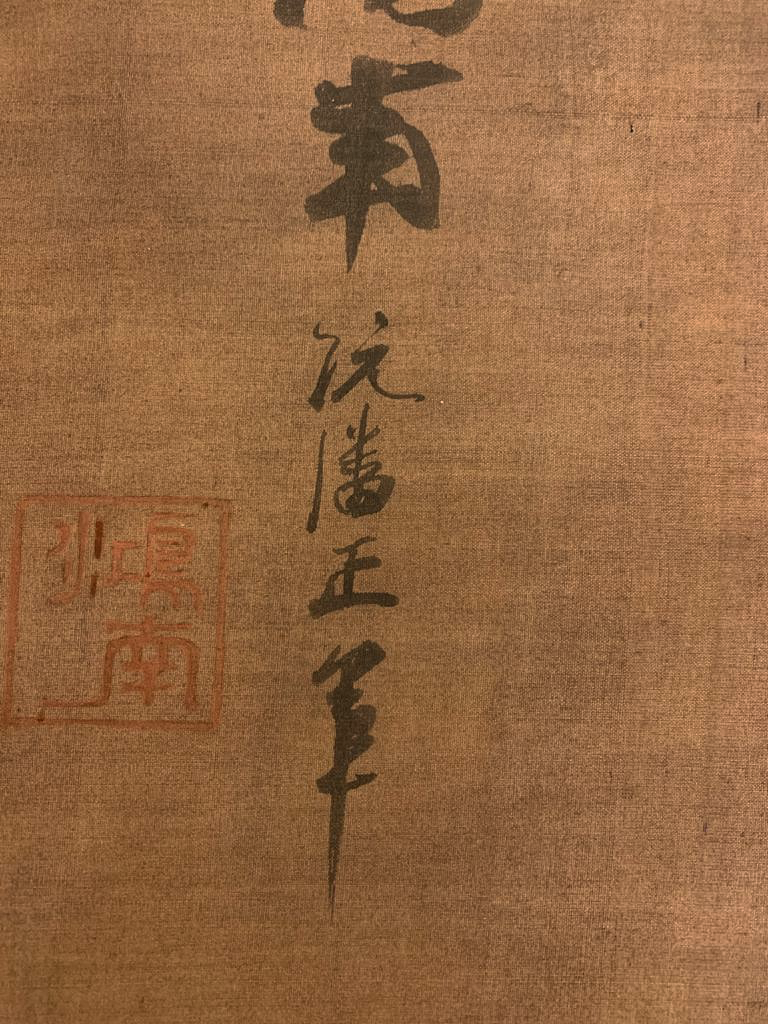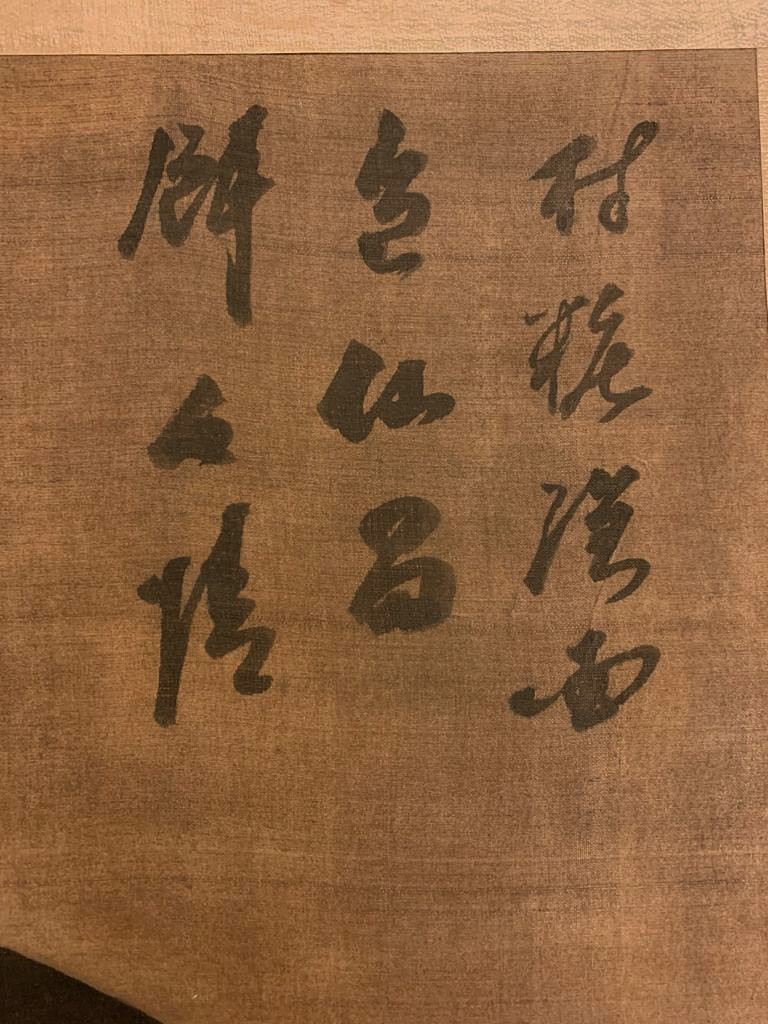LA PÂTISSERIE: THE GODS ARE IN LOVE
La Pâtisserie is one of a kind, a very rare painting which belongs to a small group of exquisite works executed by the painter between 1930 and 1931.The Chinese calligraphy in the upper left corner dates the work by mentioning "Year of the Horse, Winter". It would indicate a date between 30 January 1930 and 16 February 1931. In Hanoi, where the painting was executed, winter begins sometime in November, which should set the date of our work between November and December 1930, or even January up to 16 February 1931. The painter’ seal, the inscription "Hong Nan" and the painter’s signature occupy the upper left corner of the work while a short poem is written in the upper right corner. On the reverse, one notices a stamp in black ink, with Chinese, or possibly Quoc Ngû, inscriptions probably indicating the name and address of the framer: “Tam-Tho Boi Chanh, 56 street Bac Ninh, Hanoi.”In 1931, Captain Jacques Leboiteux travelled in Indochina as an aide-de-camp for the French Minister for Colonies, Paul Reynaud. He acquired the work then and it has remained in his family to this day.
Like in most of the painter’s early works, La Pâtisserie combines different flat tones of gouache and ink on silk. Cameos of brown and light brown next to each other offer a painting of exceptional quality. The space is constructed in a succession of triangles (the two legs in her pants and the headdress in black ink, both the feet and the face in a cream colour, the angle shaped by the feet, the fan itself ) and rounded shapes (the container filled with embers, the pancake cooking, the container, on the right where the cooked pancakes pile up). The objects in this composition are stylized: neither the jars, the fire, nor the charcoal are realistic.
Nguyen Phan Chanh is the painter of simplicity. A simplicity that doesn’t prevent elegance as a certain nobility transpires from the young woman’s face and posture. As always, the painter managed to take a simple task, the making of a rice pancake, and raise and elevate it into a noble one.
The gesture in using the fan, blowing air into the brazier below, gives the making of the rice pancake all its importance in the composition of the painting.
This is supported by the poem and its strong calligraphy set on the top right:
“The grain is a light yellow colour
Even the gods are in love with the pastry.”
Nguyen Phan Chanh has the unique talent and ability to take a simple and humble act - like these grains of rice being made into a rice cake, becoming an object of the Gods' love. It symbolises a divine simplicity: the work reflects life back to us with simplicity and truth, imbued by the true spirit of Nguyen Phan Chanh.
Let us note the discreet creamy and bluish touch which, modestly, reveals a small part of the young woman’s skin on her side as she is in a squatting position. We find her – the sole female protagonist featured in La Vendeuse de Bétel, painted in 1931, from the Tholance-Lorenzi collection, in L'Enfant à l'Oiseau from the Morax collection, and in 1933, in a much more colourful work La Jeune Fille au Perroquet. Nguyen Phan Chanh has also presented groups of women in some prominent works, such as Le Jeu des Cases Gagnantes from the Tuan Pham collection, La Marchande de Oc from a British collection and in Les Couturières from the Jean-Marc Lefèvre collection.
The Gods are in love but Nguyen Phan Chanh knows how to elevate humble Tonkinese figures into true epicureans of simplicity.
Jean-François Hubert,
Senior Expert, Vietnamese Art
